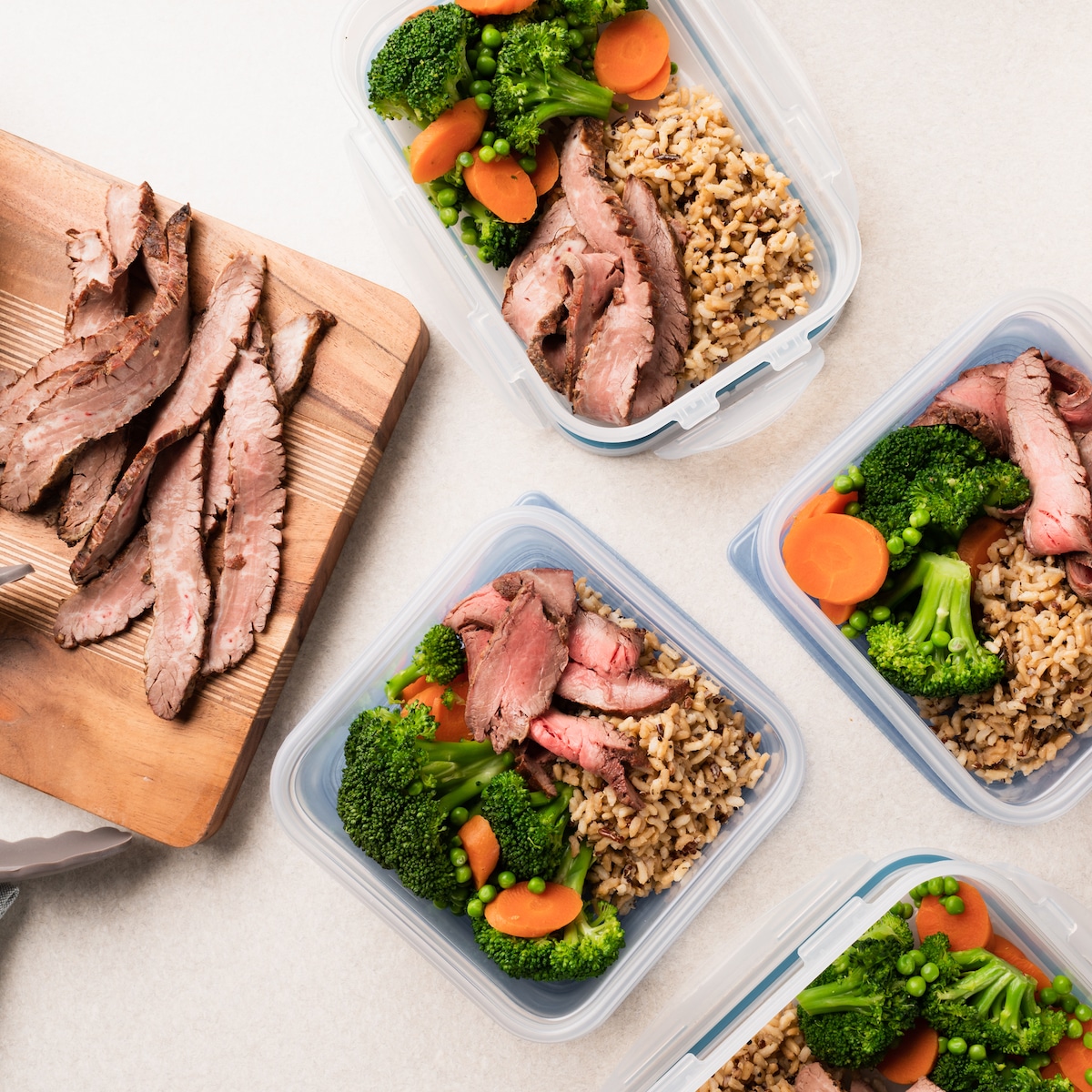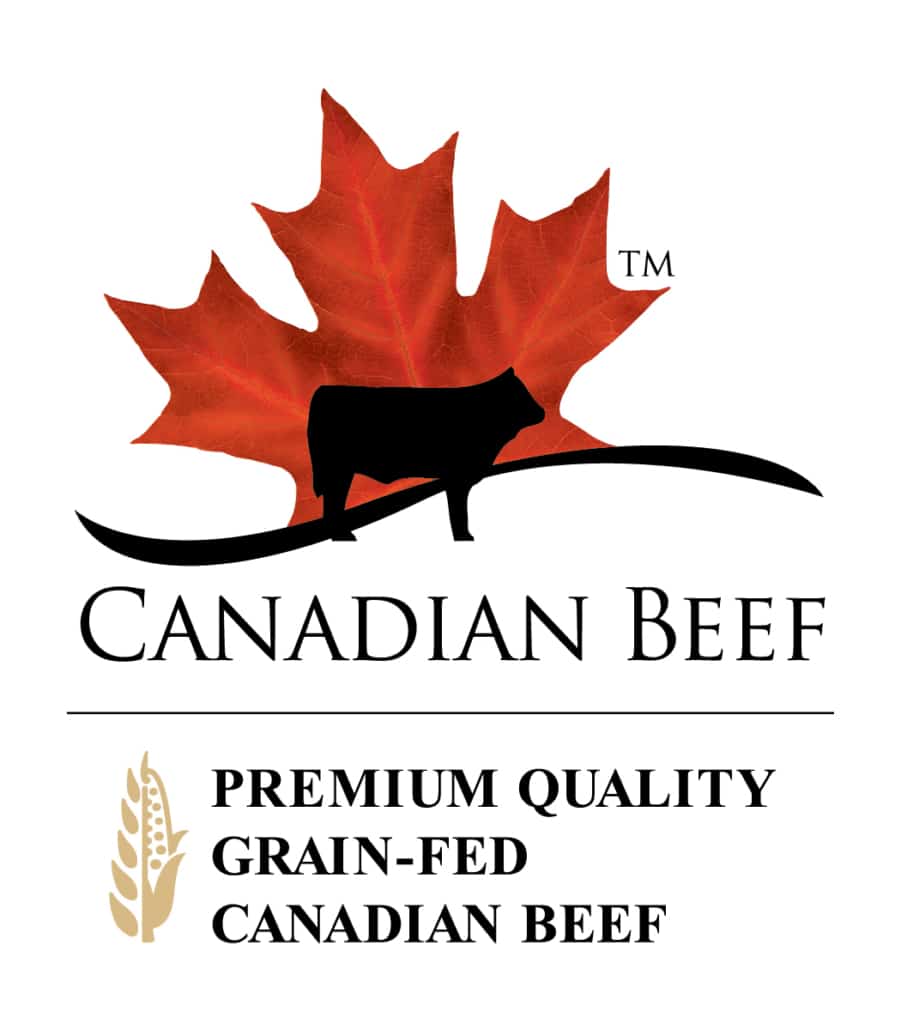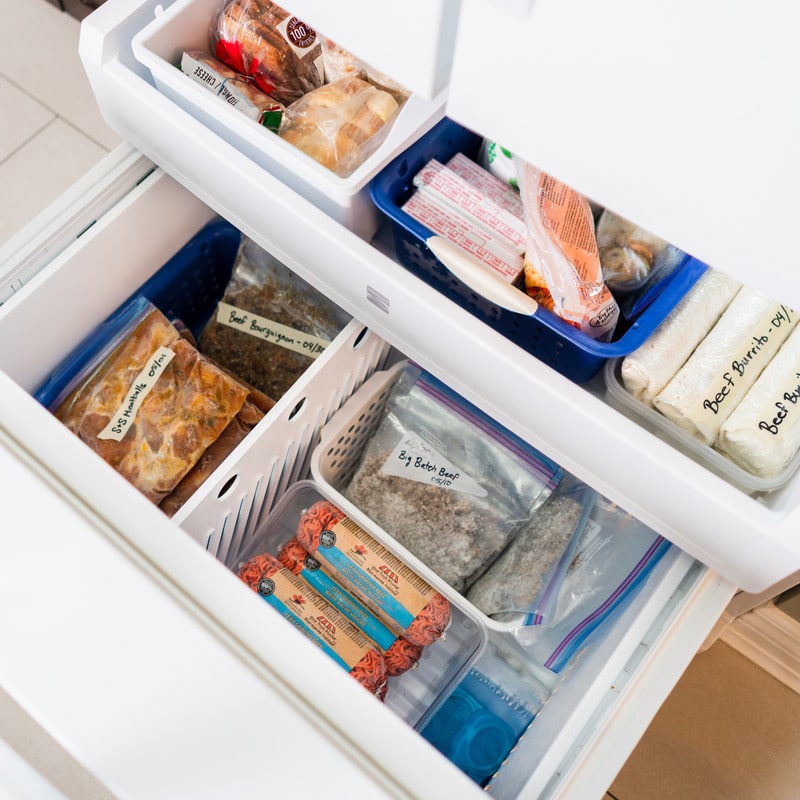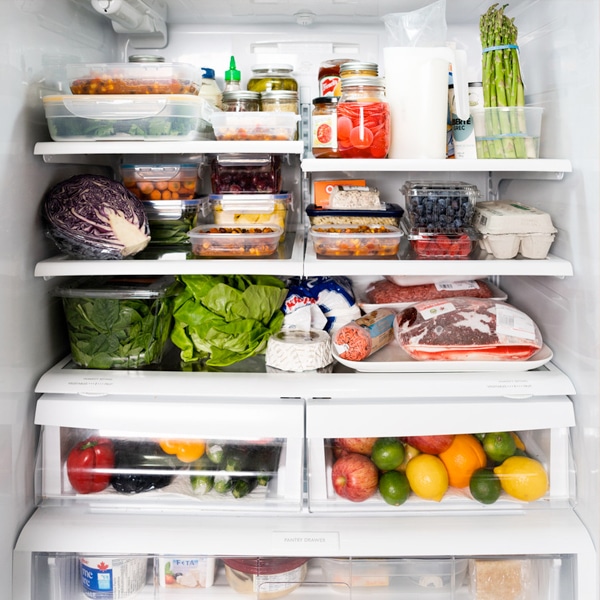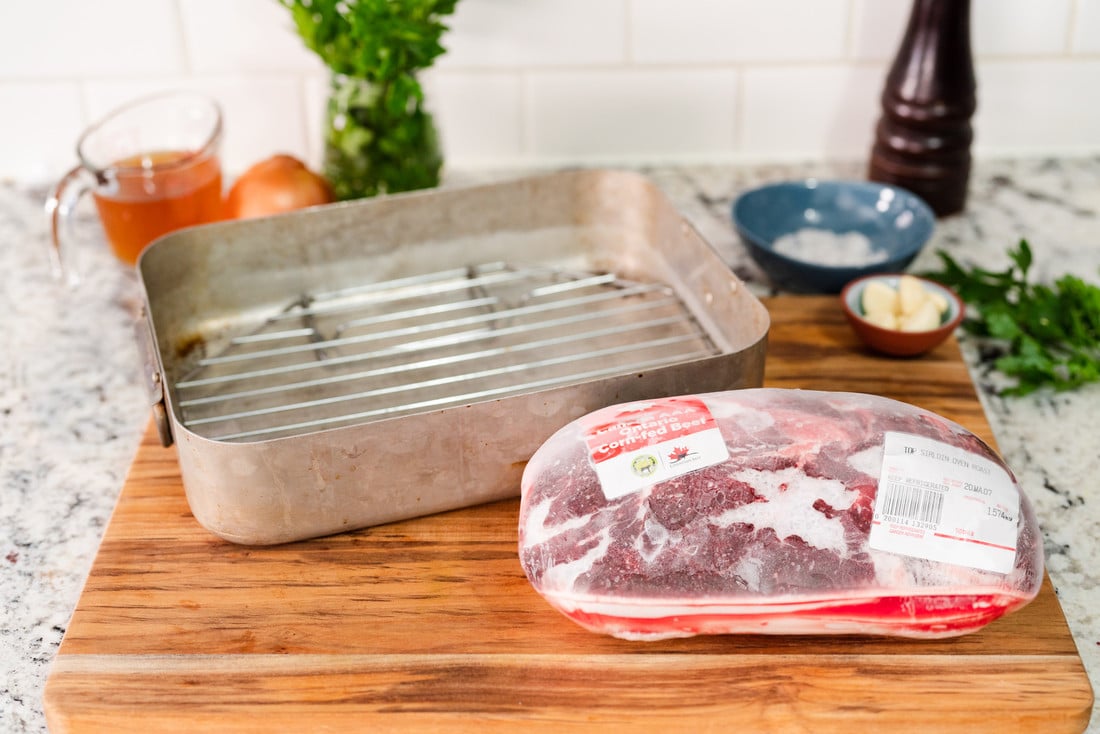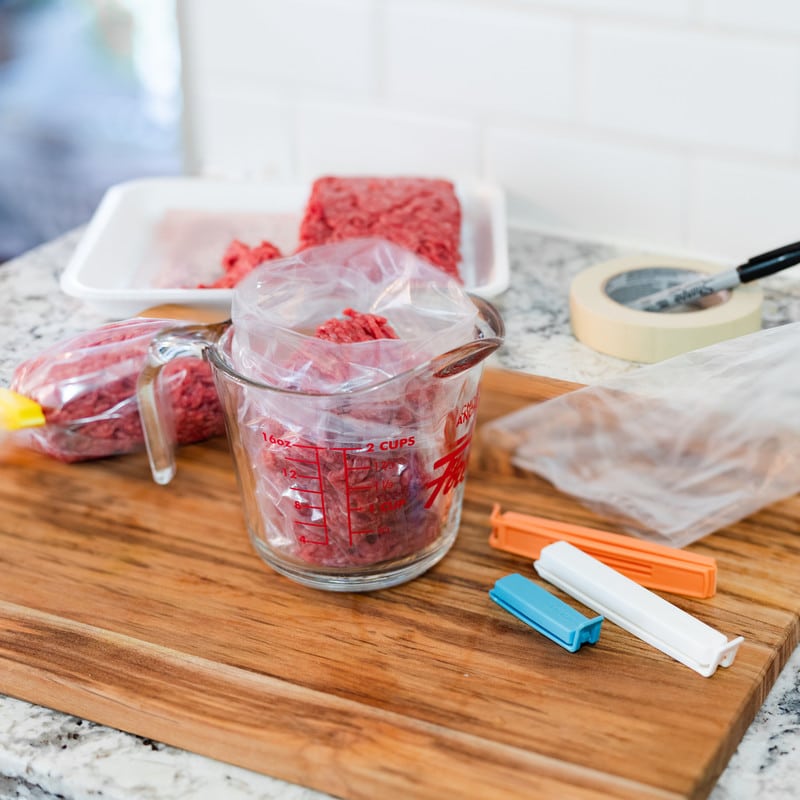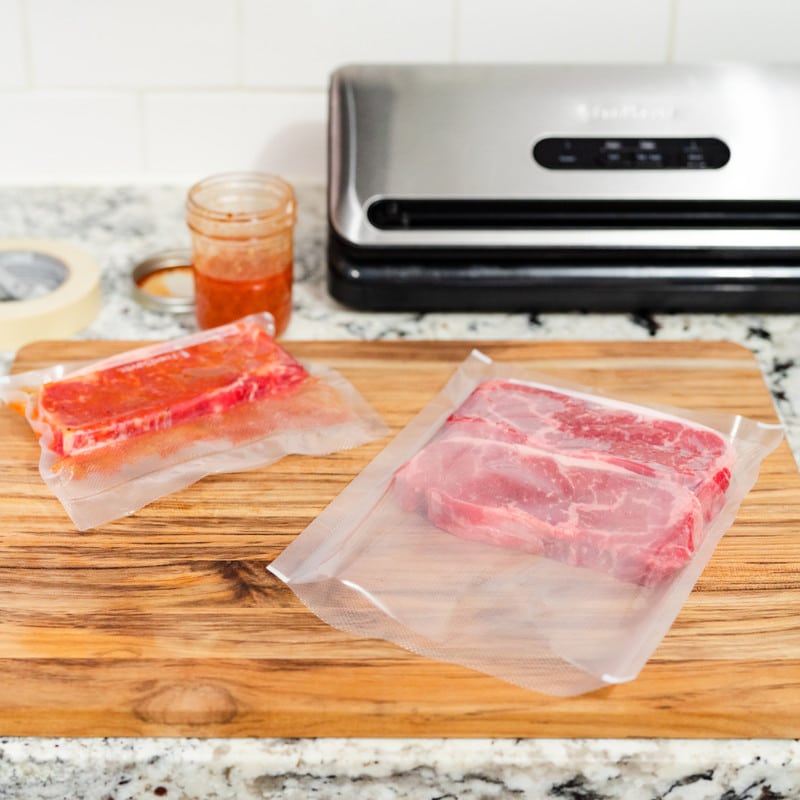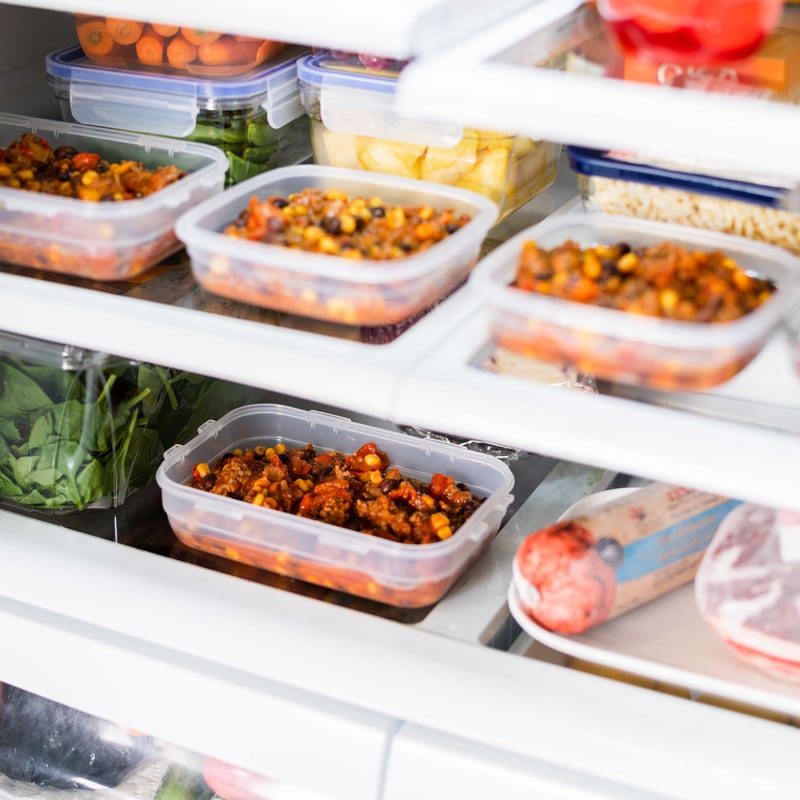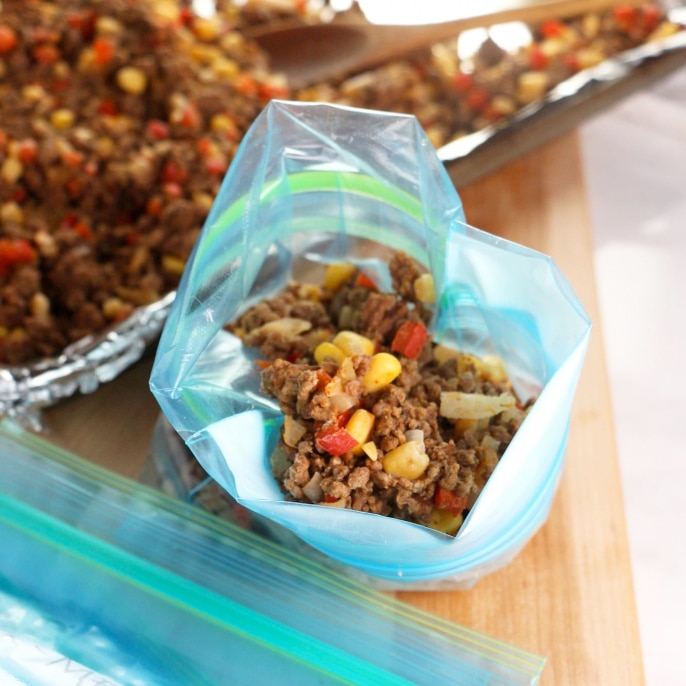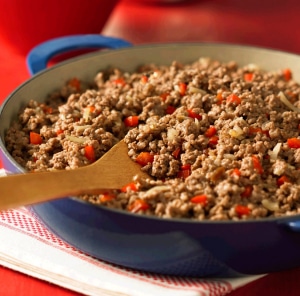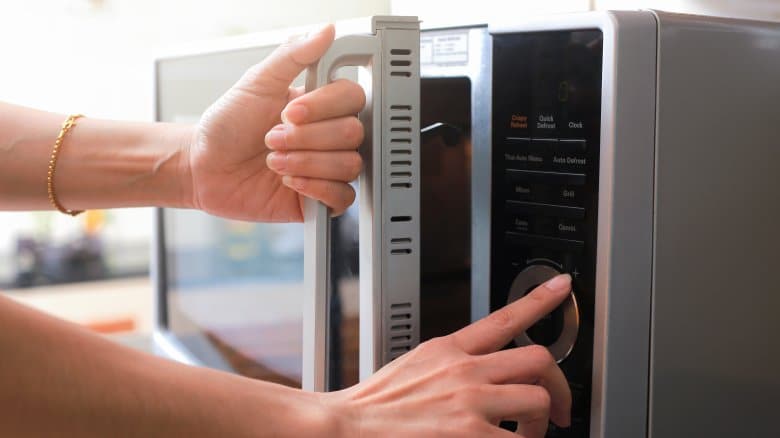Wash hands well with warm soapy water prior to handling meat. Always wash hands, utensils, cutting boards and surfaces when switching tasks such as handling raw meat and preparing vegetables or cooked foods.
“Just let what you have in your freezer, fridge and pantry inspire your weekly meals.”
Taking Stock: Beef for the Fridge & Freezer
Stocking the fridge or freezer with beef saves on trips to the store, and it can save you money as well by taking advantage of bulk-buy and/or sale pricing. Ultimately, stocking up on essentials like beef adds creativity for your home kitchen – just let what you have in your freezer, fridge and pantry inspire your weekly meals.
Shop near store-closing time to find what may be discounted for quick-sale.
Taking Stock Shopping Tips
Shop near store-closing time to find what may be discounted for quick-sale. Here are the steps you can take to safe guard food at home and while shopping. More information here on home food safety.
Refrigerate or freeze beef promptly. Use the 2 Hour Rule while shopping and in your kitchen – refrigerate or freeze fresh or cooked beef within 2 hours of purchase or prep. If the weather is hot (>80˚F/26˚C), reduce that time to 1 hour, shopping with a cooler and ice-pack in your car for meat and other perishables.
Keep raw beef and its juices separate from other foods. Use the plastic bags provided at store as a glove to pick up the package of beef, invert the bag over the package, and your meat is now bagged and kept separate from your other foods while packing the groceries.
Consider buying bulk packs of beef cuts, ground beef or a large roast that you can divide into smaller portions for the freezer.
Taking Stock Storage Tips
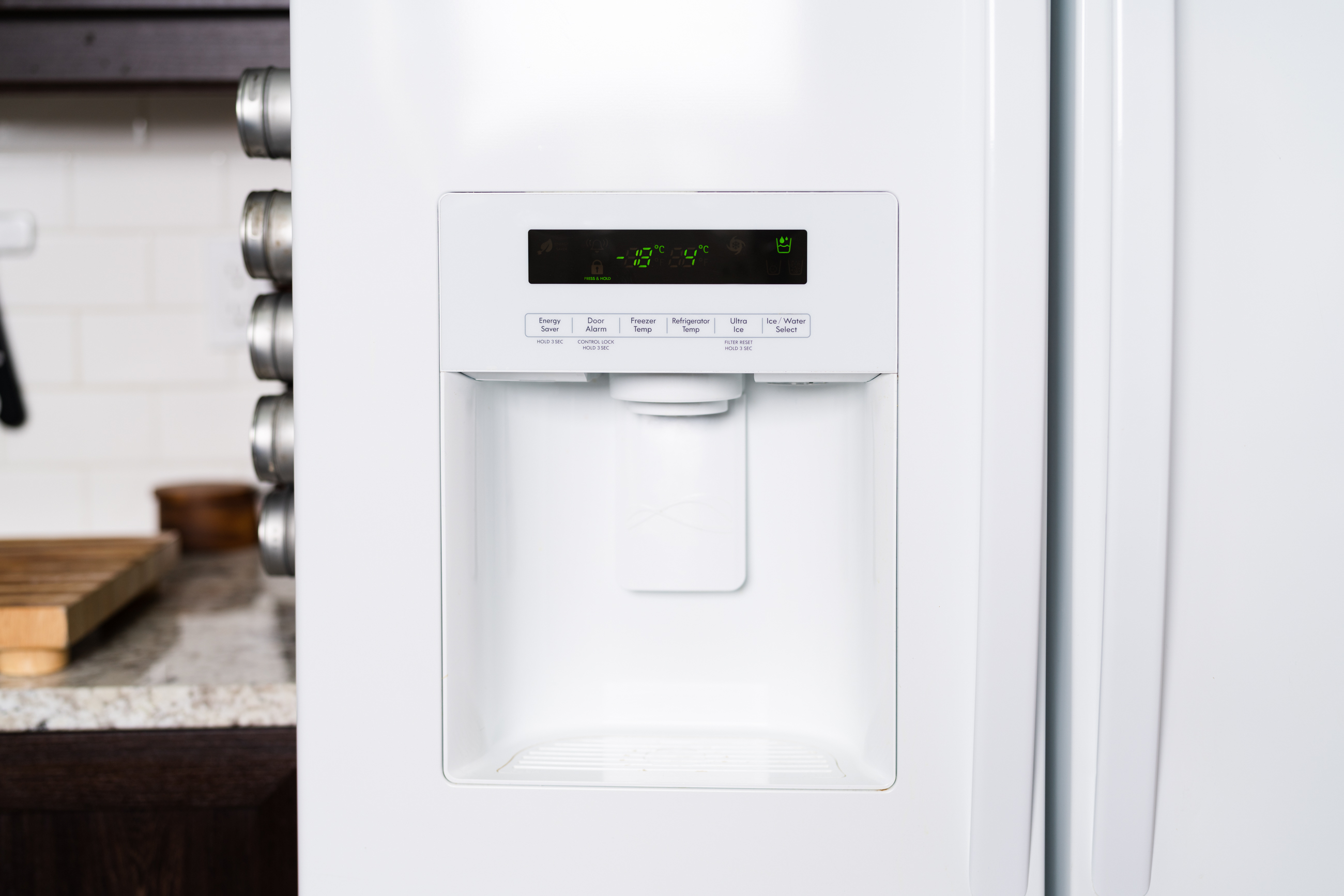 Cold temperatures can prevent most harmful bacteria from growing. Set your fridge temperature to be at 40˚F (4˚C) at the most. For the freezer, the temperature should be 0°F (-18°C) or lower.
Cold temperatures can prevent most harmful bacteria from growing. Set your fridge temperature to be at 40˚F (4˚C) at the most. For the freezer, the temperature should be 0°F (-18°C) or lower.
Check your fridge and freezer temperatures with the appliance read-outs or buy a fridge/freezer thermometer from the hardware store to monitor on a regular basis.
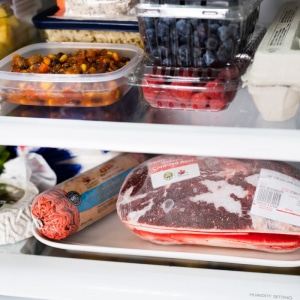
Keep packages of meat on a plate on the bottom shelf of the fridge to reduce the risk of juices dripping onto other foods.
Refrigerate or freeze fresh beef according to the chart guidelines here. Freeze before going out of date, either raw or cooked prior to freezing. Cooked beef should be eaten or frozen within 3 days of preparation.
Note: If beef was frozen and then thawed, it should be cooked prior to re-freezing. Watch for the statement ‘previously frozen’ on pack when buying beef.
When freezing beef, freeze quickly by placing in the deepest part of the freezer for the coldest temperature. For general kitchen hygiene tips check out the Food Safety at Home resource.
Storage Chart
from ‘packaged on’ date or storage date from butcher
| Fridge | Freezer | |
|---|---|---|
| Ground Beef | 1-2 Days | 2-3 Months |
| Variety Meats (eg. liver, kidney, heart) | 1-2 Days | 3-4 Months |
| Stew Beef, Ribs, Stir-Fry Strips, Kabobs | 2 Days | 3-6 Months |
| Steaks, Roasts, Chops | 2-4 Days | 8-12 Months |
| Cooked Meats, Cold Cuts (opened pkg) | 3-4 Days | 2-3 Months |
| Vacuum Packed Roasts, Steaks (unopened)* | See best before date | 10-12 Months |
*NOTE – If package has a ‘best before date’, use by that date.
Once opened, use or freeze as recommended in the chart above.
You can’t tell if food is safe by smelling or looking at it.
IF IN DOUBT, THROW IT OUT.
Note: If beef was frozen and then thawed, it should be cooked prior to re-freezing. Watch for the statement ‘previously frozen’ on pack when buying beef.
Freezing Basics
Fresh beef can be frozen successfully, assuming that the meat has not been previously frozen. If previously frozen, cook before freezing Freeze or cook fresh beef that you don’t plan to use within 1 day for ground beef, 2 days for stews, strips or kabob cubes or for up to 3 days for steaks and roasts.
To maintain quality, when freezing, beef needs to be wrapped tightly with a heavy wrap, forcing out as much air as possible. Beef that has been packaged at the store with a plastic-film and tray needs to be over-wrapped to prevent leaks, punctures and freezer burn.
Beef that is purchased in air-tight vacuum packaging and ground beef that is packed in air-tight plastic tubes is freezer-ready and does not need to be over-wrapped prior to freezing.
Freezer Burn
Freezer burn is a condition that occurs when frozen food has been damaged by dehydration and oxidation, due to air reaching the food. It is generally caused by food not being securely wrapped in air-tight packaging. Freezer burn does not make the food unsafe; it causes dry spots in foods and can affect the flavour.
Credit:Wikipedia
Some helpful tools:
Butcher Paper
Beef is often sold wrapped this way from the butcher and this material is freezer-friendly. If you have butcher paper at home, seal packages using the Drug Store Fold.
Foil
Foil is good for over-wrapping plastic-wrap store packaging or parchment paper wrapped beef. Use the Drug Store Fold to seal.
Parchment
Good for portioning out burgers, ground beef or steaks. Use the Drug Store Fold to seal and then freeze in plastic freezer bags or sealable containers.
Milk Bags
DYK you an make your own plastic freezer bags and cut-down on waste by re-purposing your empty 1 L milk bags: cut off one end of your empty milk bag, and wash it out well with soap and water, rinse and let dry overnight. The milk bag works well as a heavy freezer bag that’s the perfect size for small batches of ground beef, burgers, stew beef and strip loin steak. Use a twist tie or clips to seal.
Plastic Freezer Bags
Use zipper type or twist tie sealable freezer bags.
Vacuum pack sealer with bags
A vacuum sealer is not necessary for freezing foods, but this method does ensure beef stays fresh longer in the fridge or freezer. Vacuum packs reduce the risk of packaging leaks when storing and thawing. If the plastic bags are marked sous-vide friendly, you can also cook thawed beef right in the bag by sous-vide.
Sharpie markers and/or labels
Help you identify what you are freezing. Be sure to mark the date as well so you can know what frozen food to use from your freezer first.
Sealable Containers
Containers are good for portioning out cooked dishes like stew, chili or bourguignon, or for burgers or steaks wrapped in parchment paper or plastic film. Glass containers let you microwave, re-heat and eat casseroles straight from the container.
Freezing Step-by-Step
Freezing
Tip #1
Lay packages of meat or cooked dishes flat to freeze. Flat packages are more space efficient so they can be stacked for freezing.
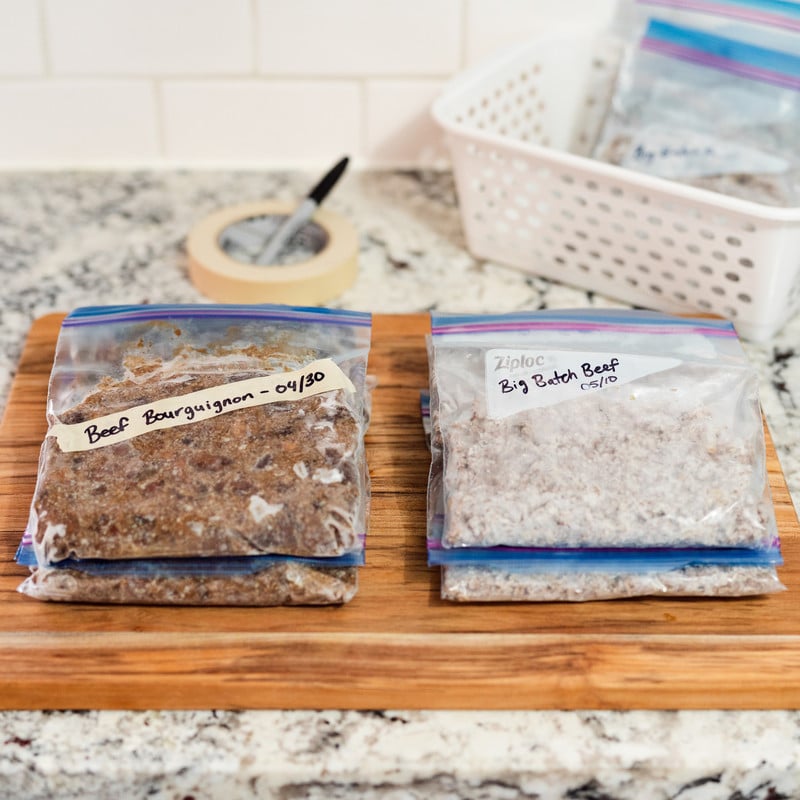
Freezing
Tip #2
Divide leftovers into meal-portions prior to freezing so that lunch or dinner is ready to grab-and-go straight from the freezer. Ideally, freeze the leftover meat portion of a dish whole (unsliced) and ideally in its’ sauce or gravy. For the side-dishes, use freezer-friendly foods that re-heat well: cooked rice or grain, cooked lentils or beans, corn, peas, carrots or squash for example. Use portioned cooked meals as a gift-dropfor seniors or neighbours who can’t get out to shop or for the new Moms or the students in your life.
